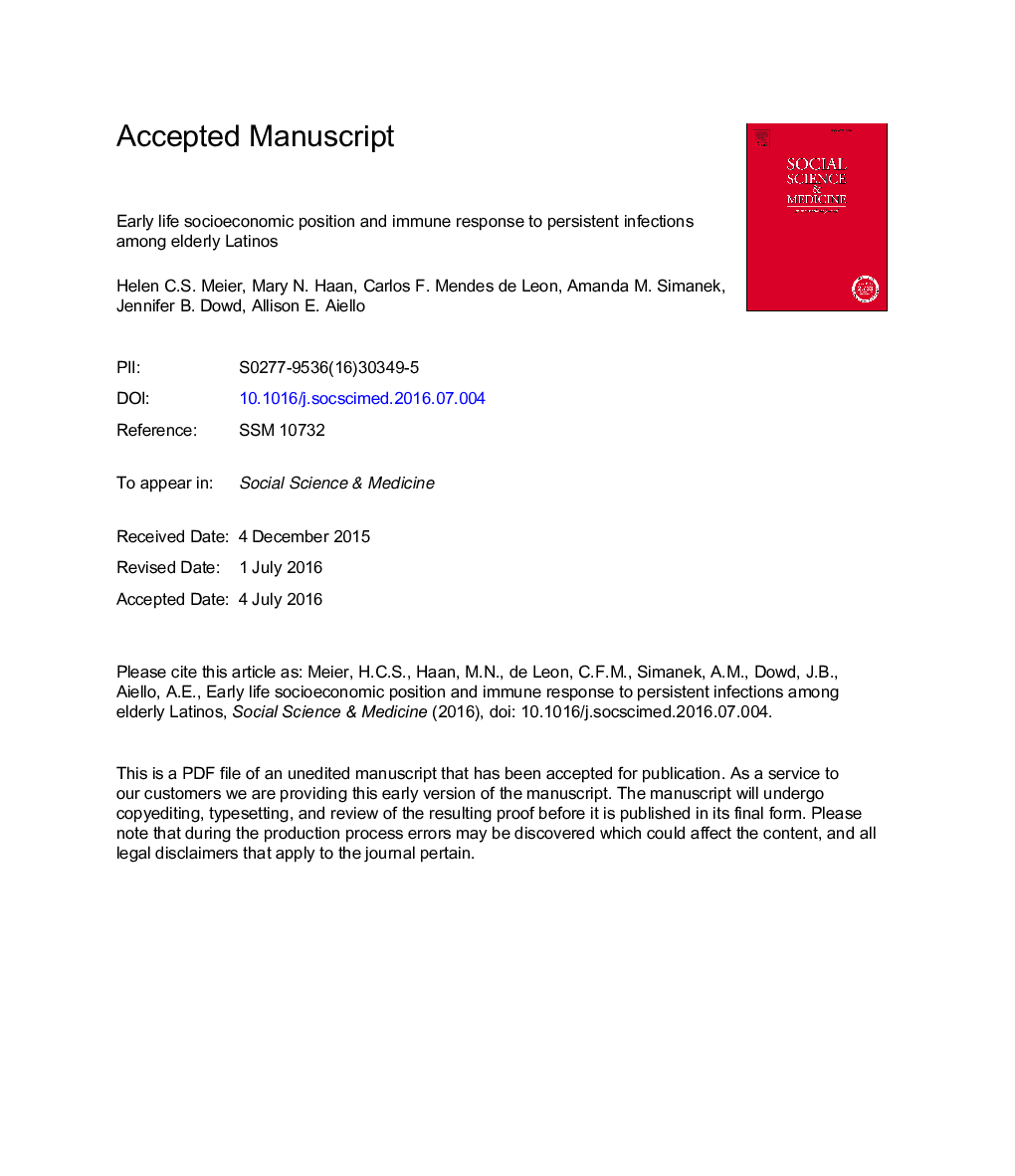| کد مقاله | کد نشریه | سال انتشار | مقاله انگلیسی | نسخه تمام متن |
|---|---|---|---|---|
| 7329205 | 1476003 | 2016 | 36 صفحه PDF | دانلود رایگان |
عنوان انگلیسی مقاله ISI
Early life socioeconomic position and immune response to persistent infections among elderly Latinos
ترجمه فارسی عنوان
موقعیت اجتماعی اقتصادی زودرس و پاسخ ایمنی به عفونت های مداوم در میان سالمندان سالخورده
دانلود مقاله + سفارش ترجمه
دانلود مقاله ISI انگلیسی
رایگان برای ایرانیان
کلمات کلیدی
موقعیت اجتماعی و اقتصادی، عفونت های مکرر، اپیدمیولوژی دوره زندگی، سلامت لاتین،
موضوعات مرتبط
علوم پزشکی و سلامت
پزشکی و دندانپزشکی
سیاست های بهداشت و سلامت عمومی
چکیده انگلیسی
Persistent infections, such as cytomegalovirus (CMV), herpes simplex virus-1 (HSV-1), Helicobacter pylori (H. pylori), and Toxoplasma gondii (T. gondii), are common in the U.S. but their prevalence varies by socioeconomic status. It is unclear if early or later life socioeconomic position (SEP) is a more salient driver of disparities in immune control of these infections. Using data from the Sacramento Area Latino Study on Aging, we examined whether early or later life SEP was the strongest predictor of immune control later in life by contrasting two life course models, the critical period model and the chain of risk model. Early life SEP was measured as a latent variable, derived from parental education and occupation, and food availability. Indicators for SEP in later life included education level and occupation. Individuals were categorized by immune response to each pathogen (seronegative, low, medium and high) with increasing immune response representing poorer immune control. Cumulative immune response was estimated using a latent profile analysis with higher total immune response representing poorer immune control. Structural equation models were used to examine direct, indirect and total effects of early life SEP on each infection and cumulative immune response, controlling for age and gender. The direct effect of early life SEP on immune response was not statistically significant for the infections or cumulative immune response. Higher early life SEP was associated with lower immune response for T. gondii, H. pylori and cumulative immune response through pathways mediated by later life SEP. For CMV, higher early life SEP was both directly associated and partially mediated by later life SEP. No association was found between SEP and HSV-1. Findings from this study support a chain of risk model, whereby early life SEP acts through later life SEP to affect immune response to persistent infections in older age.
ناشر
Database: Elsevier - ScienceDirect (ساینس دایرکت)
Journal: Social Science & Medicine - Volume 166, October 2016, Pages 77-85
Journal: Social Science & Medicine - Volume 166, October 2016, Pages 77-85
نویسندگان
Helen C.S. Meier, Mary N. Haan, Carlos F. Mendes de Leon, Amanda M. Simanek, Jennifer B. Dowd, Allison E. Aiello,
